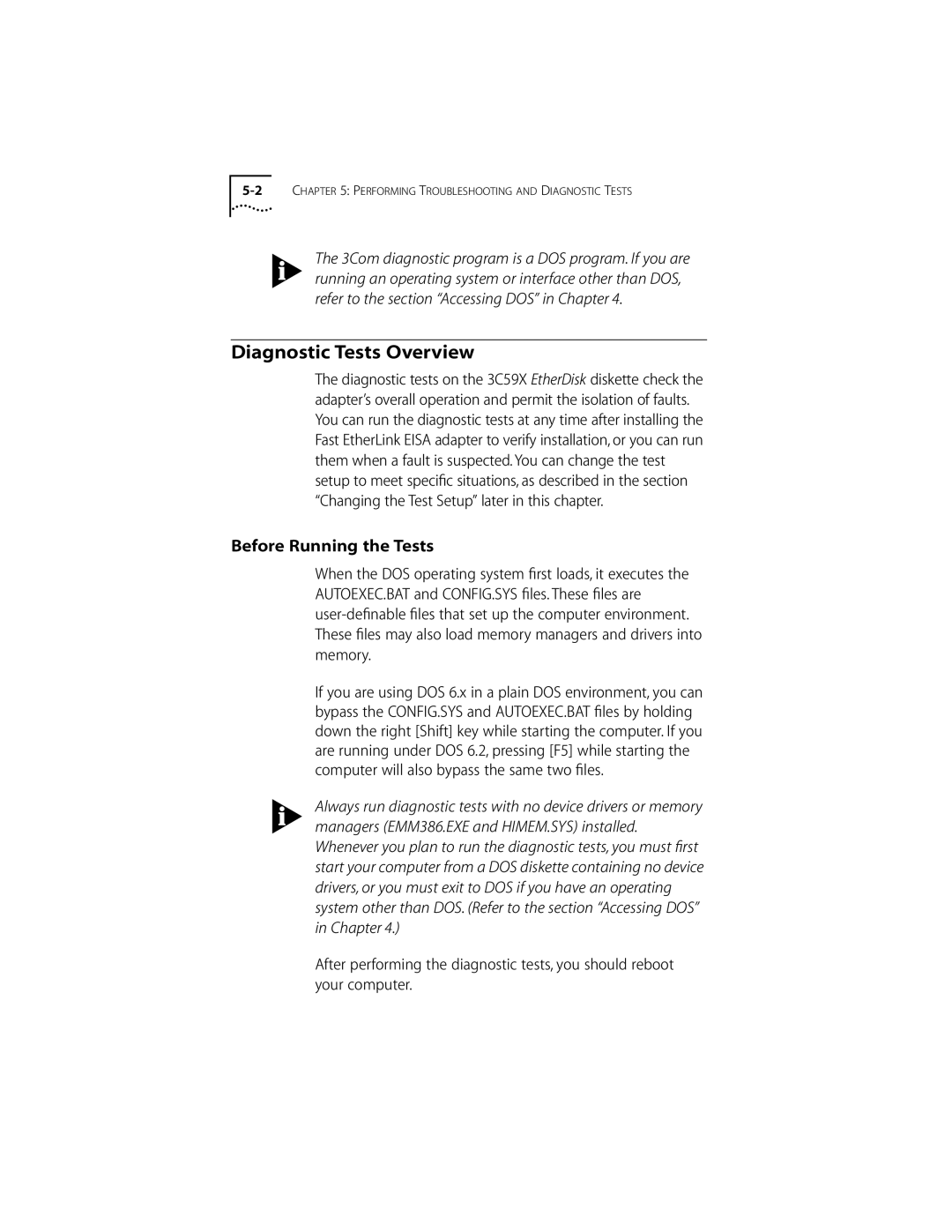
The 3Com diagnostic program is a DOS program. If you are running an operating system or interface other than DOS, refer to the section “Accessing DOS” in Chapter 4.
Diagnostic Tests Overview
The diagnostic tests on the 3C59X EtherDisk diskette check the adapter’s overall operation and permit the isolation of faults. You can run the diagnostic tests at any time after installing the Fast EtherLink EISA adapter to verify installation, or you can run them when a fault is suspected. You can change the test setup to meet specific situations, as described in the section “Changing the Test Setup” later in this chapter.
Before Running the Tests
When the DOS operating system first loads, it executes the AUTOEXEC.BAT and CONFIG.SYS files. These files are
If you are using DOS 6.x in a plain DOS environment, you can bypass the CONFIG.SYS and AUTOEXEC.BAT files by holding down the right [Shift] key while starting the computer. If you are running under DOS 6.2, pressing [F5] while starting the computer will also bypass the same two files.
Always run diagnostic tests with no device drivers or memory managers (EMM386.EXE and HIMEM.SYS) installed. Whenever you plan to run the diagnostic tests, you must first start your computer from a DOS diskette containing no device drivers, or you must exit to DOS if you have an operating system other than DOS. (Refer to the section “Accessing DOS” in Chapter 4.)
After performing the diagnostic tests, you should reboot your computer.
